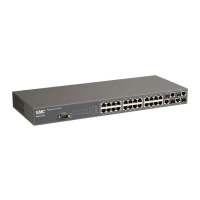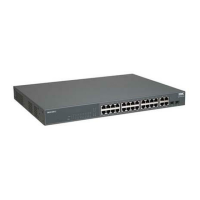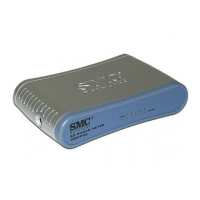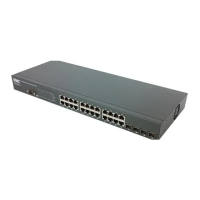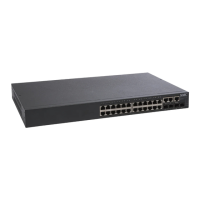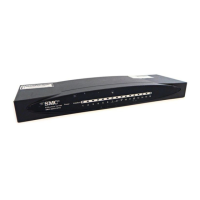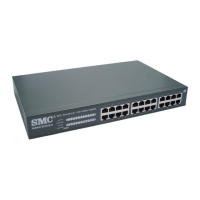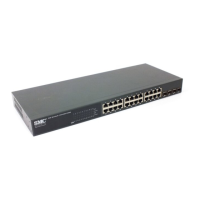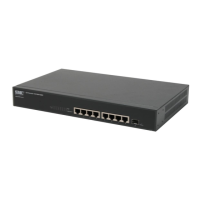POLICE
32-9
police
This command defines an policer for classified traffic. Use the no form to
remove a policer.
Syntax
[
no
]
police
rate-kbps burst-byte
[
exceed-action
{
drop
|
set
}]
•
rate-kbps
- Rate in kilobits per second. (Range: 1-100000 kbps or
maximum port speed, whichever is lower)
• burst-byte - Burst in bytes. (Range: 64-1522 bytes)
• drop - Drop packet when specified rate or burst are exceeded.
• set - Set DSCP service to the specified value. (Range: 0-63)
Default Setting
Drop out-of-profile packets.
Command Mode
Policy Map Class Configuration
Command Usage
• You can configure up to 64 policers (i.e., meters or class maps) for
each of the following access list types: MAC ACL, IP ACL (including
Standard ACL and Extended ACL), IPv6 Standard ACL, and IPv6
Extended ACL. This limitation applies to each switch chip
(SMC8824M: ports 1-26, SMC8848M: ports 1-25, ports 26-50).
• Policing is based on a token bucket, where bucket depth (i.e., the
maximum burst before the bucket overflows) is by specified the
burst-byte field, and the average rate tokens are removed from the
bucket is by specified by the rate-bps option.
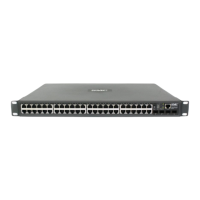
